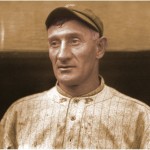Honus Wagner

No player left a bigger legacy in Hot Springs than “the Flying Dutchman.” He enjoyed the baths and all the activities Hot Springs had to offer, he also participated in civic functions and coached the high school basketball team. Honus played in dozens of classic baseball games at Whittington Park. On March 19, 1911, he recorded a single, triple and home run, while his Hall of Fame manager, Fred Clarke, hit two home runs.

































